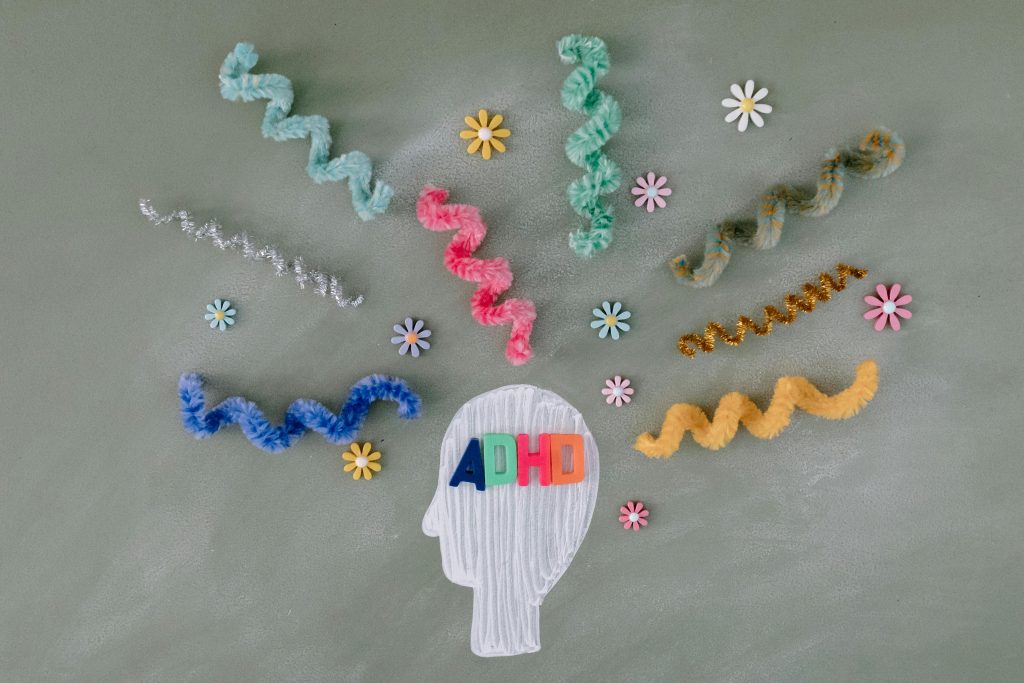Introduction: When Focus Fades and Phones Appear
You’re delivering a training session that you’ve spent days preparing for. Your slides are sharp, your examples relevant, your delivery confident—and yet, within ten minutes, the room changes. Learners start glancing at their phones, zoning out, or giving polite nods while mentally checking out. Sound familiar?
In today’s learning landscape, trainers need actionable strategies to engage learners that go beyond traditional instruction. These methods ensure that learning sticks and participants remain mentally present throughout the session.
If you’ve ever wondered why attention seems to vanish despite your best efforts, you’re not alone. But here’s the good news: it’s not a sign of failure—it’s simply neuroscience at play. The human brain is wired to wander. Attention naturally fluctuates every few minutes as our brain searches for novelty and meaning.

The real challenge for trainers, facilitators, and instructional designers isn’t to hold attention indefinitely—it’s to create an experience where learners continually choose to re-engage. This article explores seven science-backed strategies to engage learners that work with human cognition, not against it. You’ll discover how to design sessions that sustain focus, spark curiosity, and make learning truly stick.
These proven strategies to engage learners are grounded in neuroscience and real-world facilitation experience. Whether you’re leading a classroom workshop or a virtual program, these techniques will help you design sessions that sustain focus and drive deep learning outcomes.
Understanding the Science Behind Attention: The Foundation of All Strategies to Engage Learners
Before diving into the practical part, it’s crucial to understand why attention fluctuates. Research in cognitive psychology shows that learners’ focus peaks and dips rhythmically, often every 7–10 minutes. This isn’t lack of discipline—it’s biology. When you design with attention spans in mind, you automatically start applying strategies to engage learners that keep them alert, involved, and ready to contribute.
The Orienting Response
Our brain is wired to constantly scan the environment for new or surprising information—a reflex called the orienting response. When nothing novel appears, the brain decides the environment is safe and predictable, and attention drifts elsewhere.
Trainer takeaway: Introduce moments of novelty—surprising facts, stories, visuals, or questions—to reset the brain’s attention system.
Cognitive Load Theory
Working memory can handle only a few chunks of information at a time. When we overload it with dense slides or long explanations, learners disengage as a defense mechanism.
Trainer takeaway: Break content into small, meaningful chunks. Use pauses or reflection points to let the brain catch up.
Neurotransmitters at Work

Attention is powered by chemicals like dopamine (linked to curiosity and reward) and norepinephrine (linked to alertness). When learners feel curiosity or anticipation, dopamine levels rise, sharpening focus.
Trainer takeaway: Design moments that trigger curiosity and reward—like “aha!” realizations or problem-solving challenges.
Reframe the goal: You can’t stop attention from dipping. Your mission is to create a rhythm of engagement—short, powerful attention peaks throughout your session.
Understanding how dopamine and norepinephrine shape attention gives trainers a scientific foundation to apply strategies to engage learners that truly connect with how the brain learns best.
The Pre-Session Advantage: Priming the Brain for Focus
One of the most overlooked strategies to engage learners starts before your session even begins. Attention doesn’t start at the first slide—it starts with expectation. One of the most overlooked strategies to engage learners starts before your session even begins. Attention doesn’t start at the first slide—it starts with expectation.
Use the Curiosity Gap
The brain craves closure. When something is incomplete, dopamine pushes us to find the answer. Use this to your advantage.
Action Tip: Send a teaser email before your session.
“Next Monday, we’ll reveal the one mistake 85% of managers make during performance reviews—and how to fix it.”
Learners arrive intrigued and mentally primed to learn.
Set a Learning Mission
People pay attention when there’s a clear “why.” Instead of framing your session as training, make it a mission to solve a problem.
Example:
“Today, our mission is to learn how to lead meetings that end 20 minutes earlier—and get better results.”
This purposeful framing activates intrinsic motivation—one of the most powerful strategies to engage learners right from the start.
Trainers who consistently use such strategies to engage learners before the session begins often notice participants arriving more alert, curious, and mentally ready to contribute from the very first minute.
Chunk and Change: The Golden Rule of Attention

Human attention thrives on variation. According to attention span research, most adults can sustain focused engagement for about 10–15 minutes before the mind starts to drift. That’s where the “Chunk & Change” principle comes in—a cornerstone among effective strategies to engage learners.
How It Works:
- Present content in short bursts (no more than 10–15 minutes).
- Switch up the mode of engagement: micro-lecture → reflection → discussion → poll → mini activity.
Example Rhythm:
- 10 minutes of concept exploration
- 5 minutes of pair discussion
- 3 minutes of reflection or polling
This constant rhythm of input and interaction mirrors how the brain processes and resets information.
Trainer Pro Tip: Use your slide deck timer to remind yourself when to switch modes—this keeps energy high and fatigue low.
The “Chunk & Change” technique remains one of the most practical strategies to engage learners in both live and digital settings because it honors the brain’s natural rhythm of focus and rest. Active participation isn’t just about asking questions; it’s about embedding consistent strategies to engage learners that make them feel part of the discovery process.
The Power of Pause: Turning Silence into Engagement
Silence, when used intentionally, is one of the most powerful strategies to engage learners. Our brains consolidate information during brief pauses—much like muscles strengthen during rest.
Retrieval Practice Made Simple
After presenting a concept, pause and ask:
- “Write down the one idea you want to remember.”
- “How would you apply this in your next client meeting?”
This technique activates retrieval, the process that cements learning in long-term memory. When learners recall rather than just rehear, engagement skyrockets.
Why It Works
Retrieval isn’t passive. It forces the brain to reconstruct knowledge, keeping learners cognitively active. This subtle but effective practice transforms passive listening into mental participation.
Incorporating retrieval practice as one of your core strategies to engage learners reinforces memory, fosters accountability, and keeps learners mentally invested in the learning journey.
Pose, Pause, Pounce: Making Every Learner Think
If you want to wake up a drifting room, try the Pose, Pause, Pounce technique—a classic but underused engagement strategy.
How It Works:
- Pose a powerful, thought-provoking question.
Example: “What’s one reason most performance reviews fail?” - Pause for at least 10 seconds. Let learners think (the silence is where the magic happens).
- Pounce—call on a specific person or use a random name picker.
This creates a sense of accountability and curiosity. Everyone stays alert, knowing they could be next.
Why It’s Effective:
This technique transforms a question from a spectator sport (“Any questions?”) into a participation game.
In corporate environments where multitasking is the norm, the “Pose, Pause, Pounce” technique stands out among the most effective strategies to engage learners because it demands active thinking instead of passive listening. Every successful training program relies on a mix of tested strategies to engage learners that capture attention, maintain motivation, and ensure knowledge transfer.
Emotion and Storytelling: The Heart of Engagement
Facts fade, but feelings stick. That’s why stories are one of the most effective strategies to engage learners—they activate emotional and sensory parts of the brain simultaneously, making lessons more memorable.

Use Micro-Stories
You don’t need a long case study. A two-minute anecdote or real-life example does wonders.
“Last quarter, one manager applied this technique—and her team’s response rate improved by 30%.”
Stories build empathy and connection, two emotional triggers that lock in attention.
The Science Behind It
When we hear a story, the brain releases oxytocin, the “empathy hormone.” This chemical reaction deepens engagement and trust between trainer and learner.
Trainer Tip: Embed one story every 15 minutes. It doesn’t have to be grand—just relevant, relatable, and real.
Storytelling isn’t just entertainment—it’s neuroscience in action. When added deliberately, it becomes one of the most emotionally powerful strategies to engage learners, transforming ordinary sessions into memorable experiences.
Novelty, Movement, and Surprise: Keeping the Brain Awake
The human brain thrives on novelty. When something changes—tone, environment, visual design—the brain releases dopamine, saying, “Hey, pay attention!”
Here are some creative strategies to engage learners using novelty and movement:
- Change your slide theme midway through.
- Move to a different part of the room or change your camera angle in virtual training.
- Use props, metaphors, or short video clips.
- Ask a surprising question like, “What would happen if your team stopped doing performance reviews altogether?”
Why It Works:
Each unexpected element reactivates the brain’s orienting response, preventing mental drift.
Remember: Predictability kills attention. Surprise keeps it alive.
Trainers who regularly refresh their delivery style using creative strategies to engage learners—like surprise, humor, and movement—find that their audiences remain attentive far longer and retain significantly more information.
Winning the Virtual Attention Game – Strategies to Engage Learners
Virtual learning has made engagement trickier—but not impossible. Trainers simply need to rethink pacing, interaction, and visibility.
Here’s how to adapt your strategies to engage learners for virtual or hybrid environments:
Interaction Every 4–5 Minutes
Don’t let learners stay passive. Use polls, reactions, whiteboard annotations, or chat prompts.
“Drop a ✅ if this resonates with your team.”
“In one word, describe your biggest meeting challenge.”
Frequent micro-interactions trigger mini dopamine spikes, keeping attention cycles active.
The Energy Contract
Rather than enforcing “video on,” create a shared agreement.
“Let’s all keep cameras on for the next ten minutes—this part’s about collaboration.”
This creates psychological safety and shared accountability instead of compliance.
Shorter Chunks, Sharper Changes
Online, attention dips faster. Shorten your content chunks to 5–8 minutes and change format often. This rapid rhythm helps learners reset mentally. Adapting these strategies to engage learners for virtual delivery ensures trainers don’t lose the human element in online learning—keeping digital classrooms as dynamic as physical ones.
The Trainer’s Toolkit: Practical, Ready-to-Use Strategies to Engage Learners
Here’s your quick-reference guide to keep learners hooked in any format.
| Time | Activity | Strategy in Action |
|---|---|---|
| 0–5 min | Welcome + Hook | Curiosity Gap |
| 5–15 min | Concept #1 | Chunk & Change |
| 15–25 min | Group Activity | Retrieval Practice |
| 25–30 min | Reflection | One-Minute Paper |
| 30–45 min | Concept #2 | Story + Discussion |
| 45–55 min | Case Application | Challenge Task |
| 55–60 min | Wrap-Up | Pose, Pause, Pounce |
⚙️ Rapid Interaction Menu
- Think-Pair-Share
- Chat Storm (“Type in 3…2…1…”)
- Poll Question
- One-Minute Paper
- Visual Annotation
- Stand & Reflect
- Quick Debate
- Peer Vote
- Scenario Challenge
- Emoji Response
These are low-prep, high-engagement techniques you can implement instantly.
📋 Pre-Session Engagement Checklist
✅ Send curiosity teaser email
✅ Define learning mission
✅ Prepare 2 interactive questions
✅ Plan one story per key concept
✅ Schedule mode shifts every 10 minutes
These small touches build anticipation and cognitive readiness—two essential preconditions for attention.
When combined, these tools create a practical system of strategies to engage learners that can be customized for any audience, topic, or training format.
Why These Strategies to Engage Learners Work
What makes these strategies powerful isn’t just creativity—it’s neuroscience. Every tactic you’ve seen aligns with how the brain naturally operates:
- Chunking aligns with working memory limits.
- Retrieval practice strengthens neural pathways.
- Stories and emotion activate multiple brain regions.
- Novelty and change trigger dopamine release.
- Micro-interactions reset attention loops.
You’re not tricking learners into paying attention—you’re designing experiences their brains want to follow.
Conclusion: Turning the Science of Attention into the Art of Engagement
The ability to hold attention is the modern trainer’s superpower. When you master the science of focus and apply these strategies to engage learners, you move beyond simply delivering content—you create an experience that transforms how people think, feel, and act. As trainers, our responsibility is to continually evolve and explore new strategies to engage learners that align with modern learning needs and expectations.
So next time you see eyes glaze over, remember: it’s not disinterest—it’s biology. But now, you have the blueprint to work with the brain, not against it.
The future of effective facilitation lies in mastering and continuously refining your strategies to engage learners. These methods are not trends—they are cognitive truths backed by brain science and real-world success.
By blending curiosity, rhythm, emotion, and novelty, you can design sessions that don’t just inform but ignite. Because great training isn’t about talking longer—it’s about keeping minds awake, alert, and inspired.

![The Power of Storytelling in Corporate Training: Igniting Success and Inspiring Growth [2023]](https://trainercentric.com/wp-content/uploads/2023/06/storytelling-1024x576.jpg)

